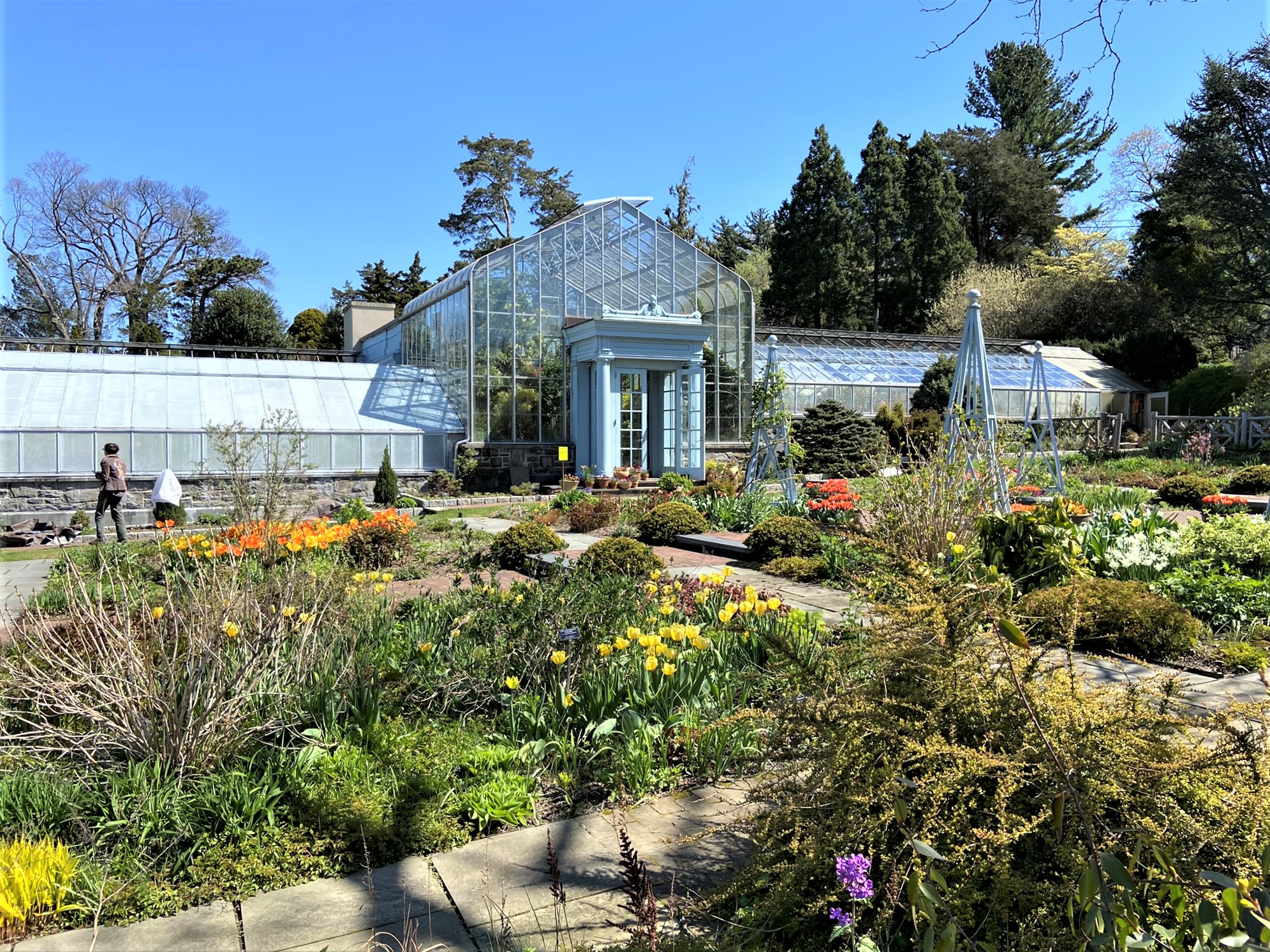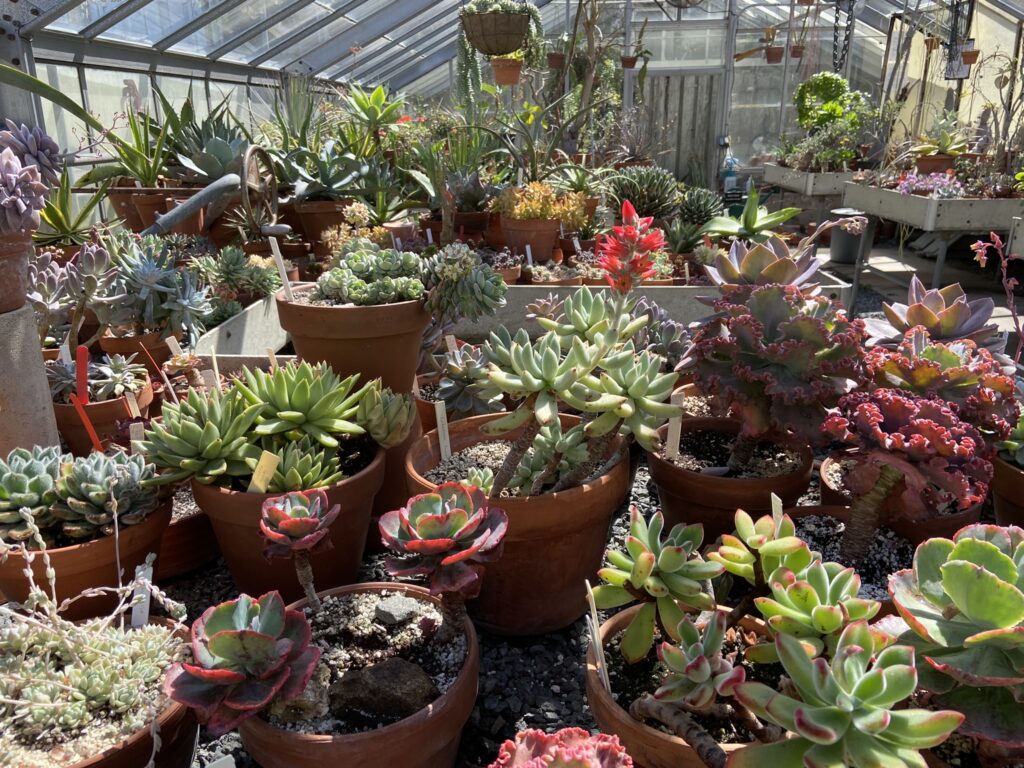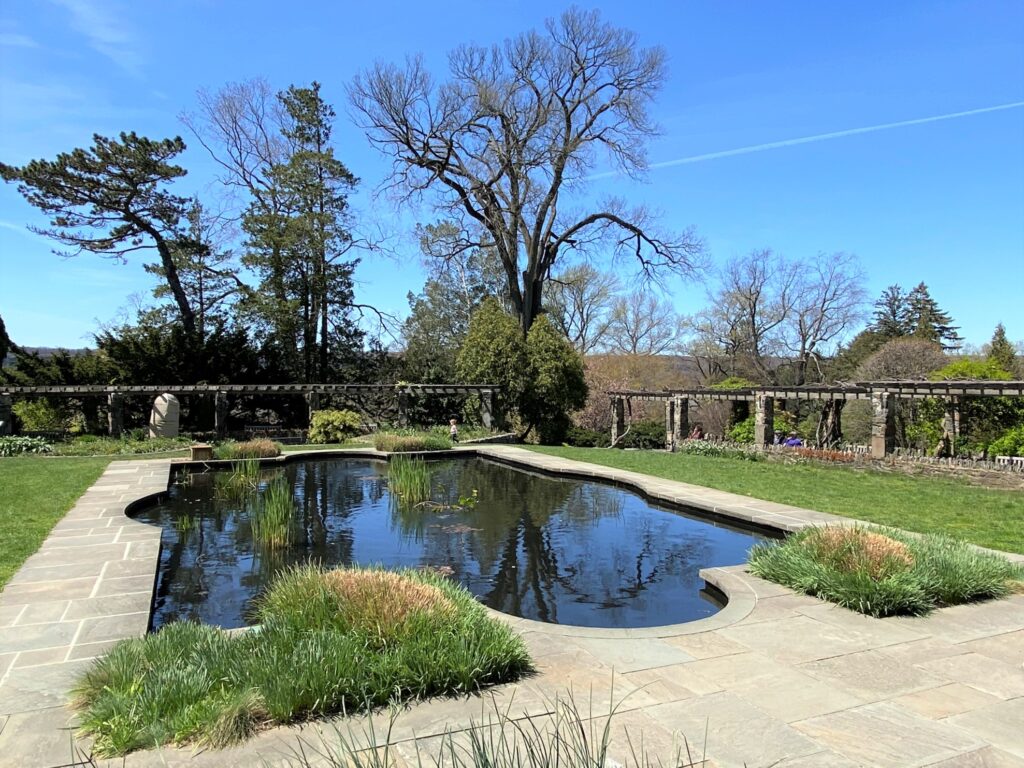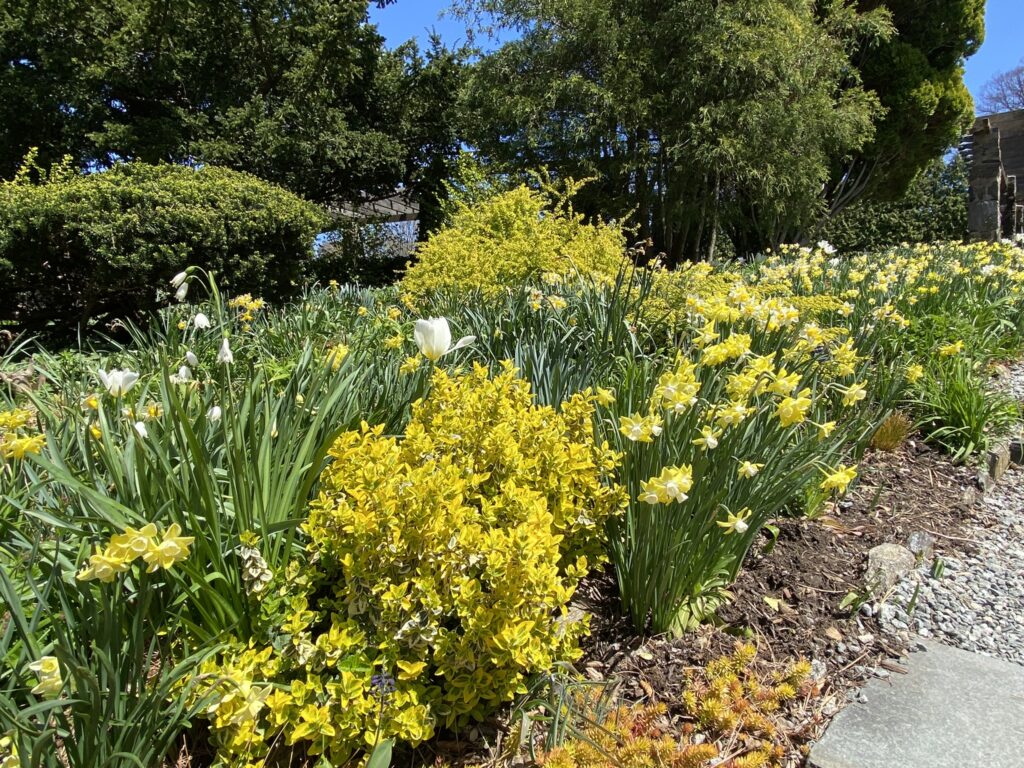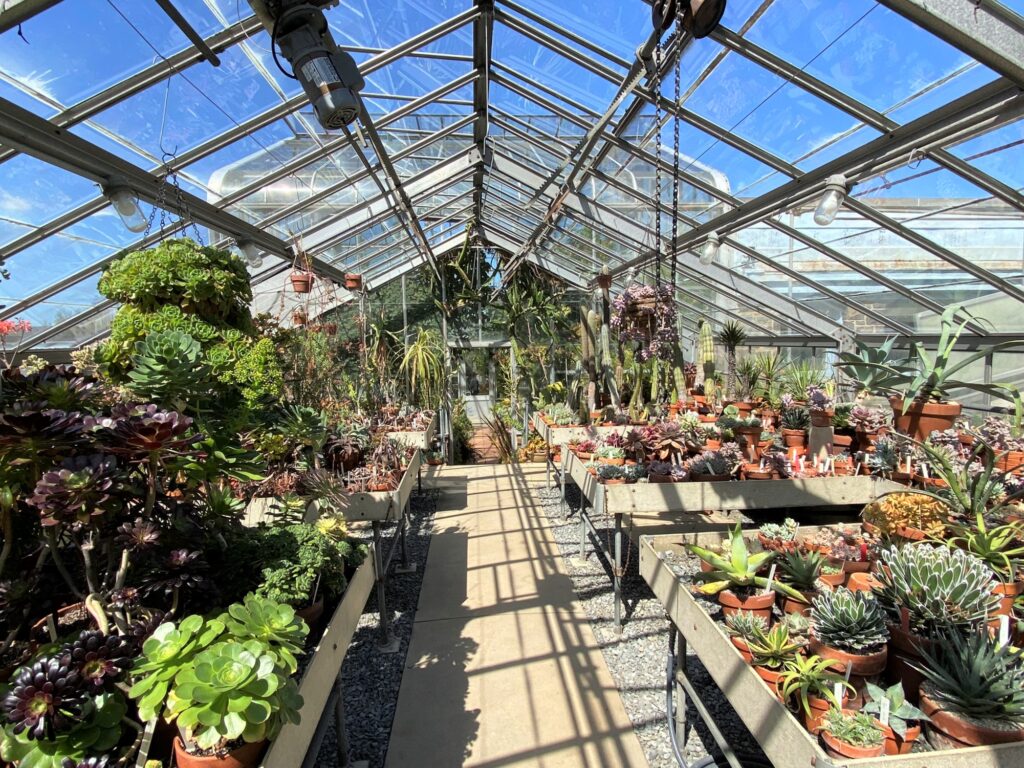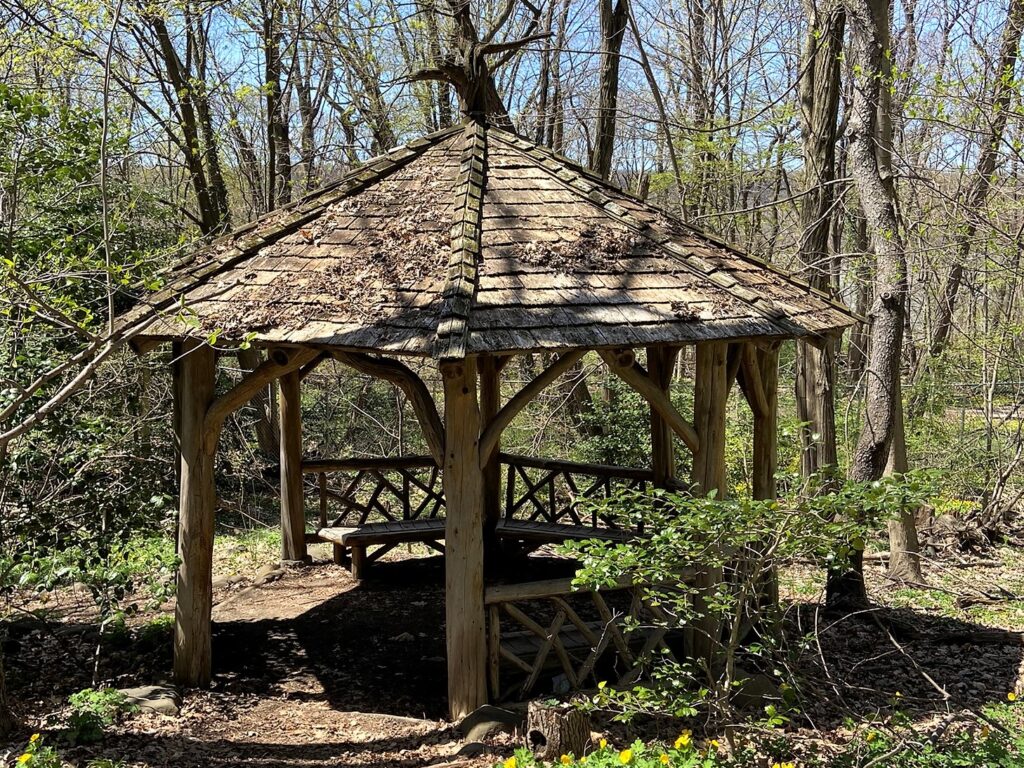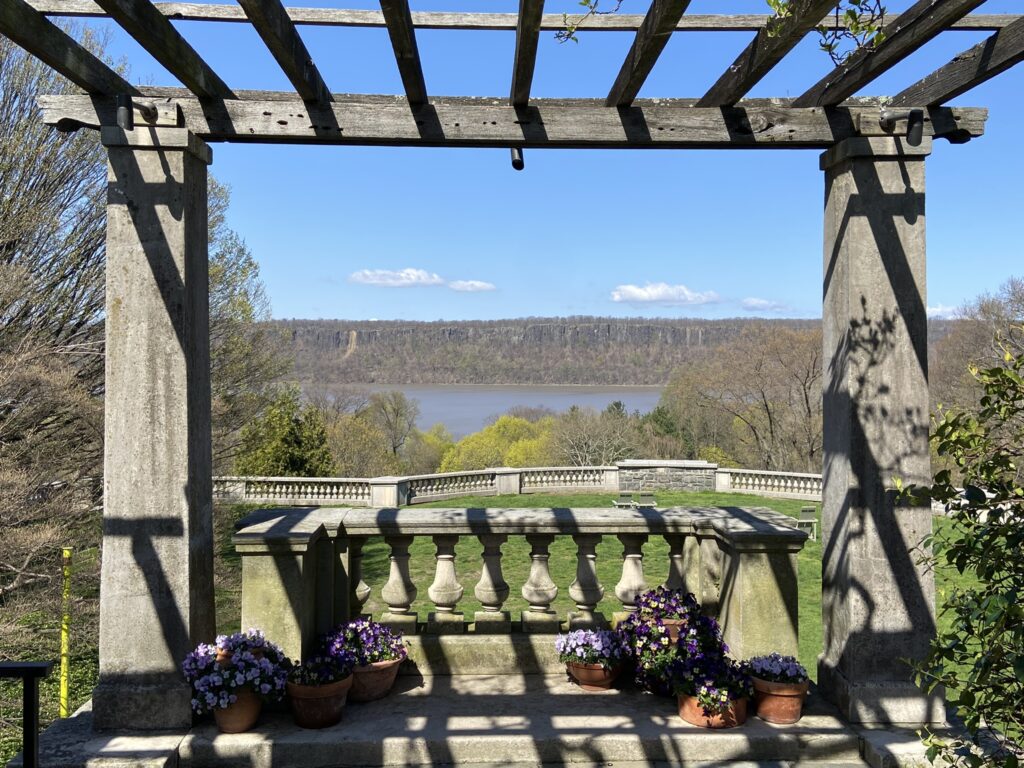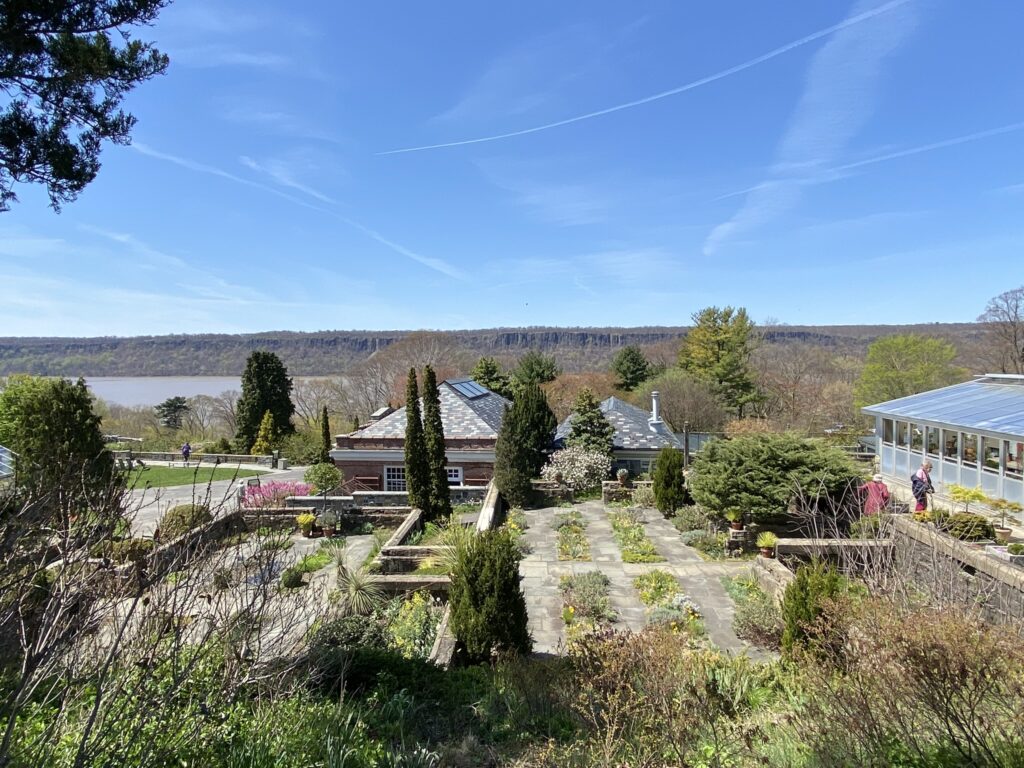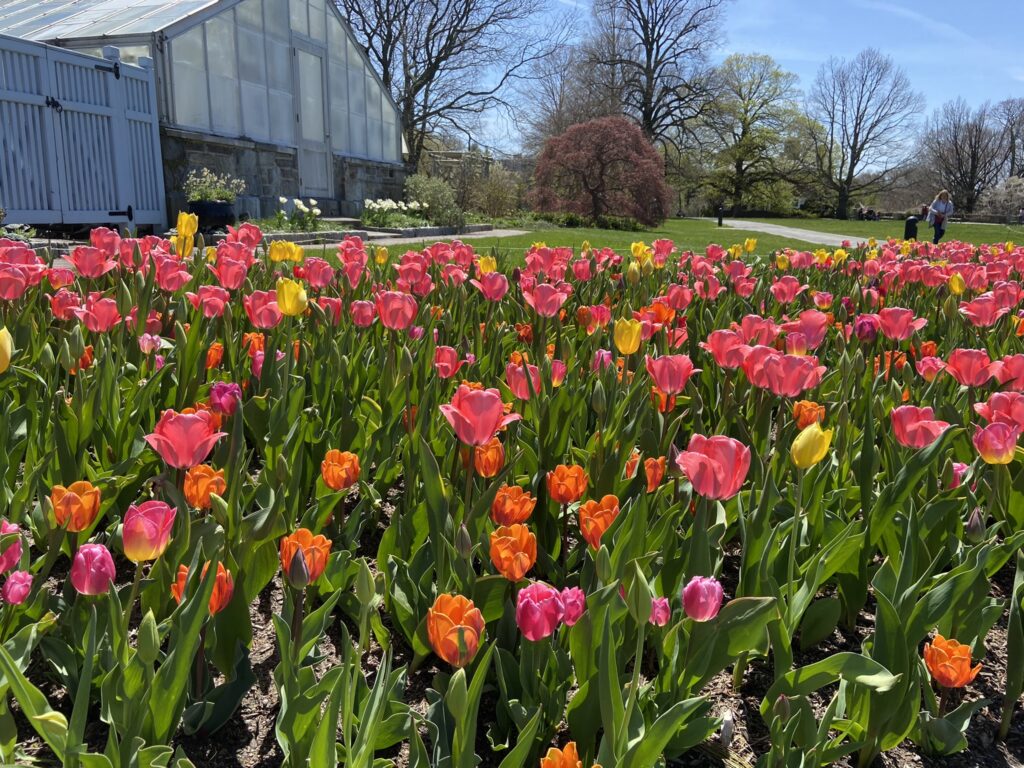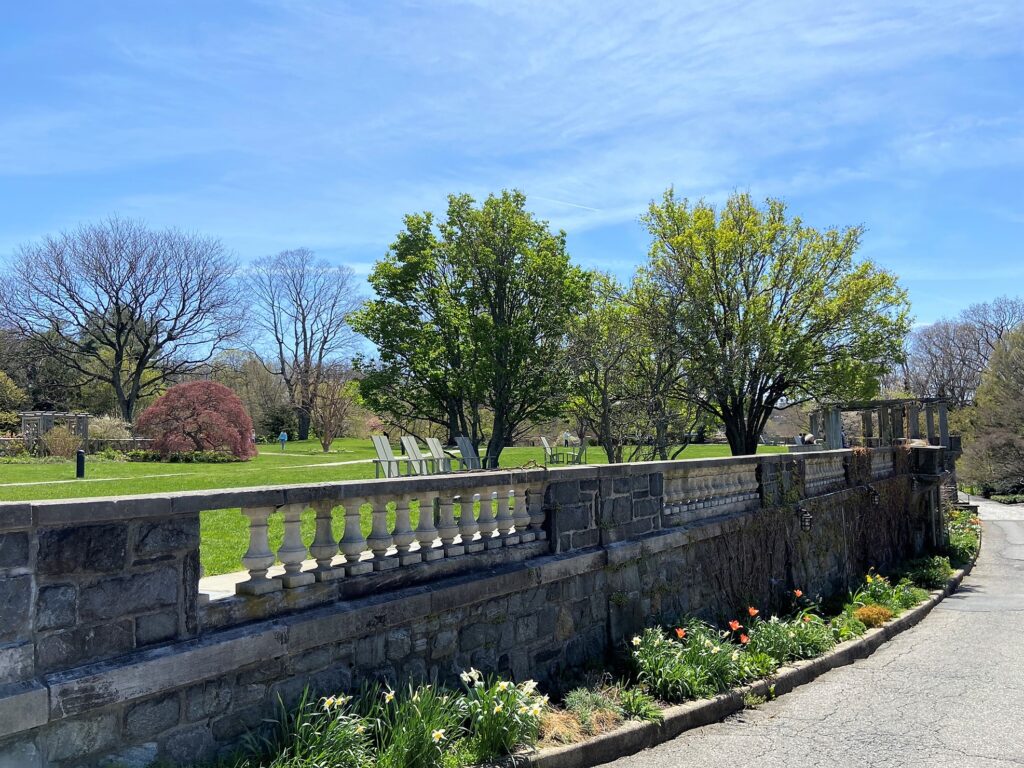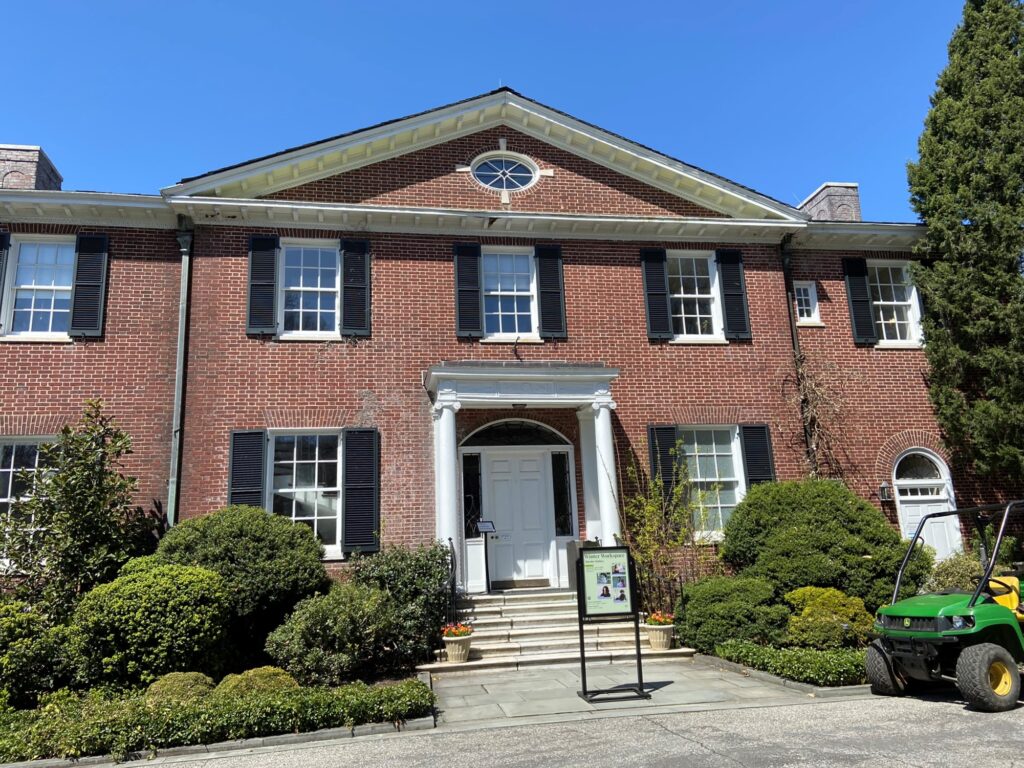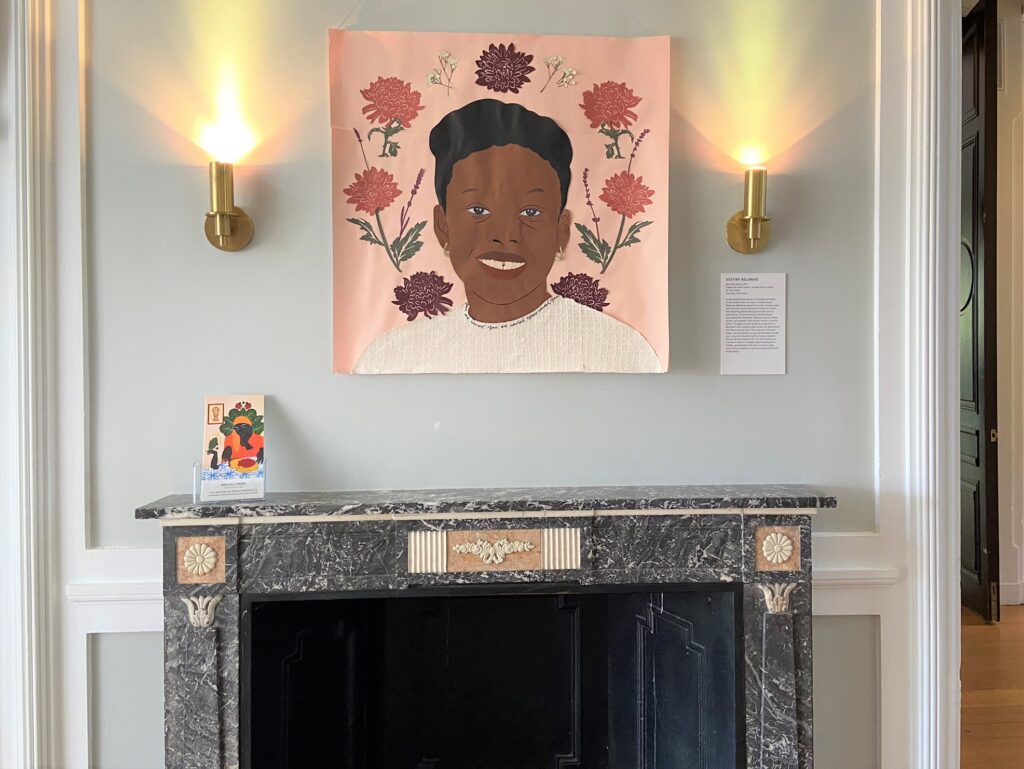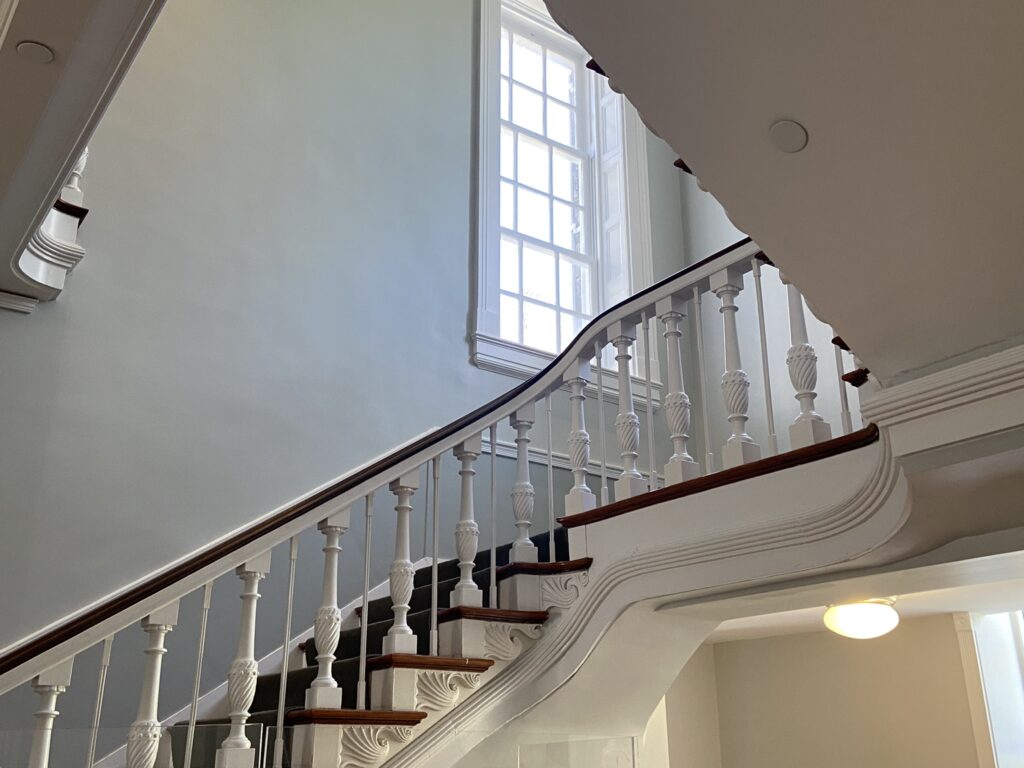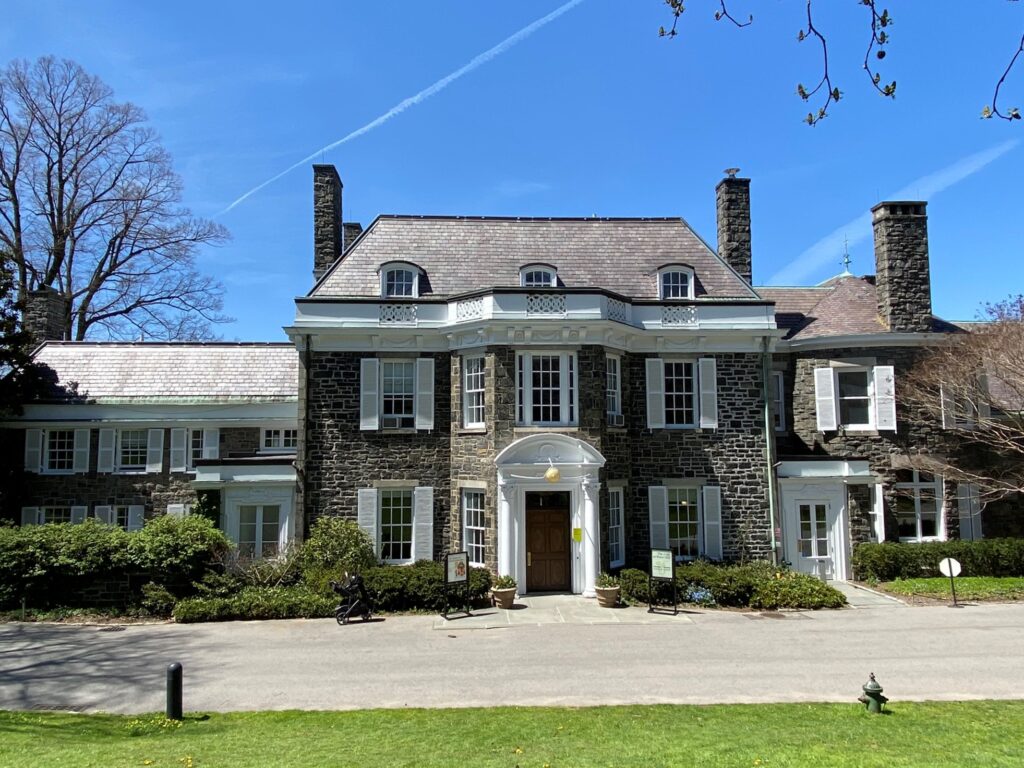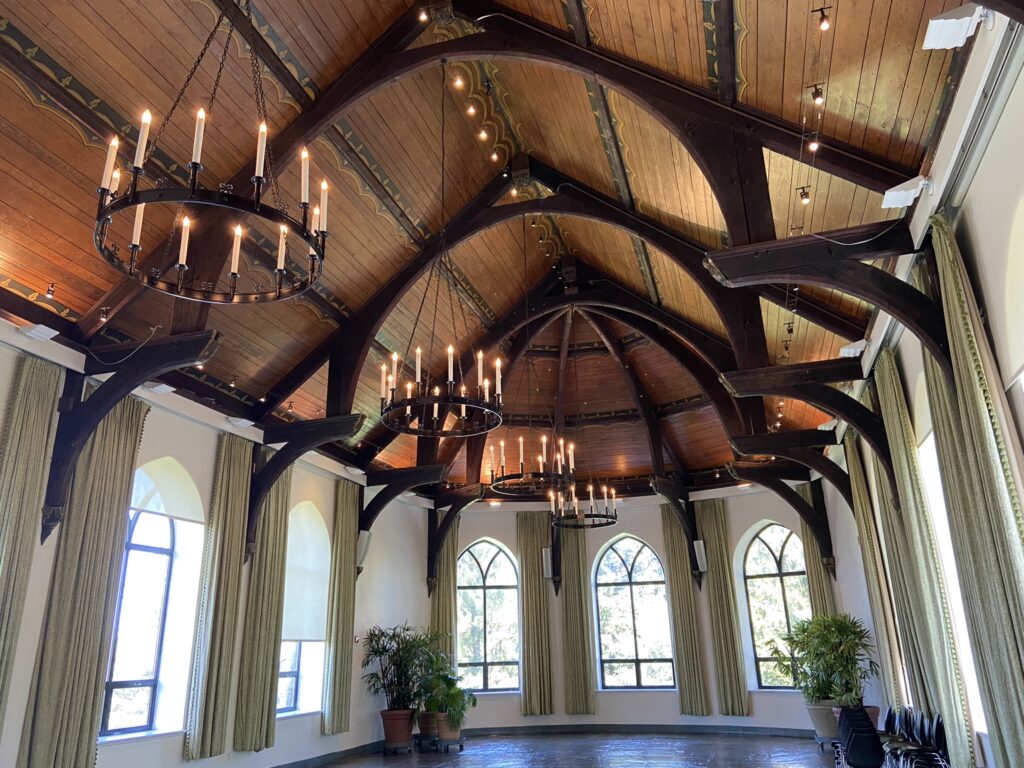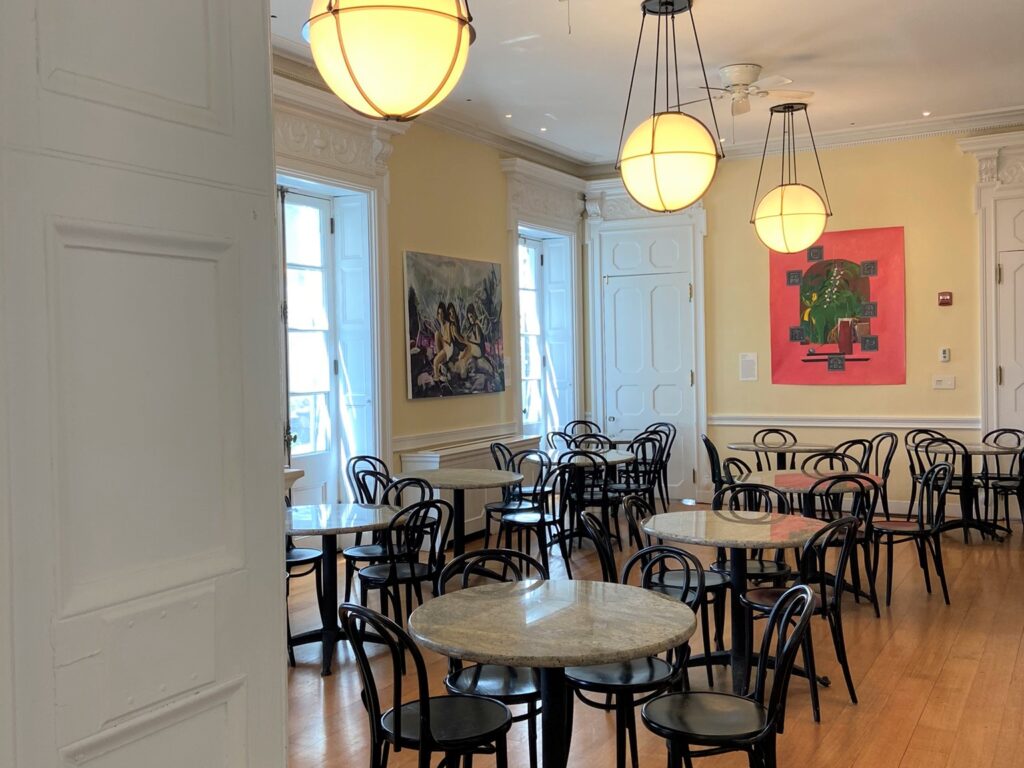Green spaces are precious in cities, and the majestic Hudson River and Palisades views and gemlike gardens of the Bronx’s Wave Hill refresh the spirit and encourage reconnection with nature. In spring, the 28 well-tended acres and two historic houses of this public garden and cultural center reflect the energy of seasonal renewal. Flowers bloom and trees come into leaf, and new exhibits and classes engage people of all ages. Although Wave Hill, a city park, is tucked away in quiet, residential Riverdale, its well-known themed gardens have long attracted visitors from around the world. These days, however, its horticultural, educational, and arts programming are equally important to its mission and outreach to visitors and a diverse community.
Among the timely exhibitions opening in late May 2022 is “Water Scarcity: Perpetual Thirst,” with art and installations by Tahir Carl Karmali, Cannupa Hanska Luger, and Lucy + Jorge Orta, which considers the impact of water scarcity on people around the world. In some cases, the works suggest solutions; Luger’s Future Ancestral Technologies examines ways that Indigenous people live sustainably. Four other exhibits will open in May and July, among them Heidi Norton’s multimedia installation, inspired by Wave Hill’s landscape. “The Nature of Family Portraits,” presented in Wave Hill House through mid-July, features work by four artists who use nature to explore human relationships, including a family’s cultural history.
The Story of Wave Hill
The spectacular natural setting, on a ridge above the Hudson River overlooking the cliffs of the glacier-formed Palisades, is one of Wave Hill’s most compelling features. This was Lenape land before Europeans arrived; by 1843, William Lewis Morris, a relative of a signer of the Declaration of Independence, and his family built a summer house called Wave Hill. Later owners included financier and conservationist George W. Perkins, who earlier had acquired Glyndor House on the Wave Hill grounds. Perkins developed gardens at Wave Hill, including the Conservatory (built in 1906–07), and was the founding chair of the Palisades Interstate Park Commission and a key figure in preserving the Palisades, which were being quarried.
A new life for Wave Hill began in 1960 when the Perkins-Freeman family gave the property to New York City to be transformed for public use. When a nonprofit organization was set up to run Wave Hill, the gardens and houses were in forlorn condition. Today Wave Hill receives 20 percent of its funding from public sources; the rest is from revenue (from admission fees and events such as weddings) and private support. Between 1967 and 2001, Marco Polo Stufano, the Founding Director of Horticulture, restored the gardens and brought innovative ideas to Wave Hill. His use of familiar plants in different settings, the contrast of artistic formal spaces and wild nature, displays of pots filled with seasonally changing plants, and other strategies brought attention to Wave Hill among garden aficionados. Published in 2019, Nature into Art: The Gardens of Wave Hill, by Thomas Christopher, explores the gardens in depth and has photographs by Ngoc Minh Ngo.
Exploring the Garden
Wave Hill’s map lists 26 gardens and points of interest, but in any season most visitors begin by walking across the Great Lawn, with its mature trees and comfortable chairs, to gaze at the Palisades and Hudson River from the Pergola Overlook. One of several places with Palisades views, the overlook is a reminder that part of Wave Hill’s unique beauty is its mixture of sweeping views and intimate spaces. Nearby, the cozy, English cottage-style Flower Garden fronts the Marco Polo Stufano Conservatory, with Palm, Tropical, and Succulent Houses; it’s fun to study the exquisite individual specimens.
The Gold Border, brimming with daffodils in spring, leads to the steps to the Kerlin Overlook and various upper gardens. Here, and from paths in the Wild Garden (filled in spring with small flowers like crocus), are more Palisades views. Nearby, the Aquatic Garden, a tranquil, plant-filled pool, and Upper Pergolas are a secluded space to relax or walk. Steps lead from the Herb Garden and Dry Garden up to the Alpine House, which holds striking plants that bloom at different times throughout the year.
Woodlands and historic houses make up other, contrasting parts of the Wave Hill experience. The half-mile Abrons Woodland Trail winds around the western and southern edges of the grounds so that visitors can explore the area. The trail has access to the Elliptical Garden, where native plants are used in a formal display in a former swimming pool. All visits should include handsome Wave Hill House, the restored gray fieldstone mansion dating to the 1840s, which holds a café and spaces for exhibits and performances. Its medieval-looking Armor Hall was built when Bashford Dean, the first curator of the Metropolitan Museum’s Arms and Armor department, lived here and wanted space for his personal armor collection. On the property’s southern side, the brick Glyndor House (now Glyndor Gallery) from the 1920s is the third version of the house; it has galleries and a sunroom for exhibitions.
Supporting Culture and the Community
Year-round, Wave Hill supports contemporary artists and the arts in a number of ways, with exhibits and programs that examine the relationship between art, nature, and ecology. Exhibits are presented in Wave Hill’s houses. In winter, the Winter Workspace program allows New York State artists to use the galleries as studios for work that responds to Wave Hill’s plants and the natural setting. Music is also important at Wave Hill, and concerts are presented in Armor Hall and on the grounds.
Paid youth internships help prepare New York City high school–age students for work or further studies in areas relating to environmental stewardship. These include a Woodland Ecology Research Mentorship program so that students can do fieldwork and science research, and an Art, Community, and Environmental Stewards program in which young people 16 to 20 work with Wave Hill’s Family Art Project participants in nature-based arts education.
Wave Hill offers wide-ranging educational opportunities for students and teachers, families, and adults of all ages, from school visits to yoga on the lawn. Family Art Project days are hands-on learning experiences for adults and kids. Special workshops for educators address nature-related topics, and classes for adults include birding sessions, cooking classes, lectures, and art and photography workshops.
Visiting the Gardens
Wave Hill’s beauty changes daily, with different things to see each season and every year. If time allows, a visit here can be combined with a stop at the larger New York Botanical Garden in the Bronx, less than 5 miles away (a 15-minute drive), to take in two special New York City treasures.
Side Dish
Visitors can savor the Wave Hill vibe while having a coffee or casual lunch at The Café at Wave Hill in Wave Hill House. Dining is in airy, high-ceilinged rooms or, in season, outside on the Kate French Terrace. There are grab-and-go items and cold drinks in a case, or diners can order at the counter from a short menu of hot drinks, soup, salads (like a vegetarian crispy tortilla salad), sandwiches (warm barbecue brisket is good), burgers, and hot dogs (with a vegan option). For a taste of the Bronx, Liebman’s kosher deli, a mile away, has been offering corned beef, pastrami, and deli classics since 1953.
Linda Cabasin is a travel editor and writer who covered the globe at Fodor’s before taking up the freelance life. She’s a contributing editor at Fathom. Follow her on Instagram and Twitter at @lcabasin.
All photos belong to and were taken by Linda Cabasin.

